.png?width=765&name=MicrosoftTeams-image%20(1).png)
Blog Highlights
- Application: The e-mesh Control is designed for the seamless integration of renewables with traditional energy assets.
- Challenge: Ensuring that multiple e-mesh controls communicate in a coordinated way.
- Solution: Typhoon controller Hardware-in-the-Loop used to design and test e-mesh controls
- Result: Typhoon HIL accelerated e-mesh control development time and increased test coverage.
- HIL Tested means flexibility, reliability, optimized, and great performance.
About Hitachi Energy
Hitachi Energy is a pioneering technology leader in advanced automation systems and digital energy solutions for utilities, industry sectors, mobility, IT, cities, and remote communities. Its e-mesh portfolio is a vertically integrated solution that manages and optimizes distributed energy resources (DERs) from the device level to systems control and IoT services.
“We are developing a solution that is addressing microgrids, energy storage, and automation and control of distributed energy resources.
Luca Cicognani
Strategic Partnerships Manager
Grid Edge Solutions at Hitachi Energy
The e-mesh Control solution is based on Hitachi Energy's robust, modular, and scalable remote terminal unit (RTU) platform. It is designed to manage the seamless integration of renewable energy assets with traditional energy assets in a complex system environment.
The Grid Edge Solutions team at Hitachi Energy used Typhoon HIL Controller Hardware-in-the-Loop (C-HIL) to design and test their e-mesh Control solutions and push the limits of testing to provide their customers with a reliable, stable, and cost-effective energy solution.
Challenge | Making sure all controllable assets in a microgrid work in a coordinated way.
A key challenge for the Grid Edge Solutions team was to make sure all controllable assets in the microgrid work in a coordinated way. They needed to interface a lot of controllers in a complex system environment and develop those controllers in a cost-efficient and effective way.
#1 Challenge | Communication Plays a Key Role
Hitachi Energy e-mesh is a vertically integrated system with different layers of control integrated into one solution. There are multiple controllers to manage and optimize microgrid distributed generation – solar PV, wind, battery energy storage systems – traditional assets and loads.
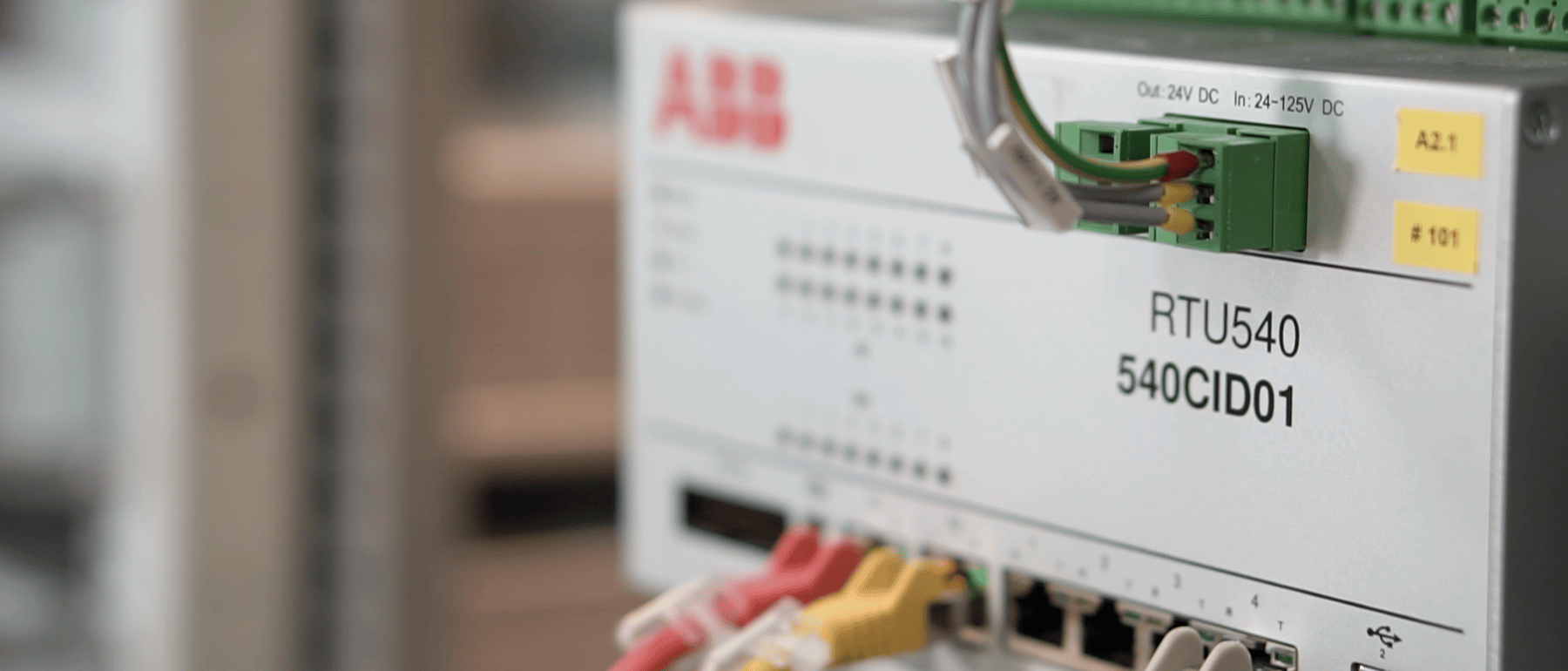
In a distributed controls approach, the e-mesh Controllers need to communicate with each other and the e-mesh SCADA interface. This implies a high number of signals that are transmitted and received among devices in the field. So, the team needed a system to test the communication protocols (i.e. Can Bus, IEC 61850, DNP3, OPC, Modbus) of the various microgrid controllers.
“In a distributed approach, communication plays a key role because we have different controllers.
Michele Fusero
Senior R&D Engineer
Grid Edge Solutions at Hitachi Energy
#2 Challenge | Software-in-the-Loop (SIL)
SIL simulation was used to develop control algorithms. SIL supports testing basic control logic but not all the layers related to hardware. While SIL provides a low-cost and safe environment for initial development, the more general models are not sufficient for detecting and mitigating many of the risks that can occur later in development.
To ensure the entire system works, a higher fidelity testing environment is needed to test all layers related to hardware, including the communication layer.
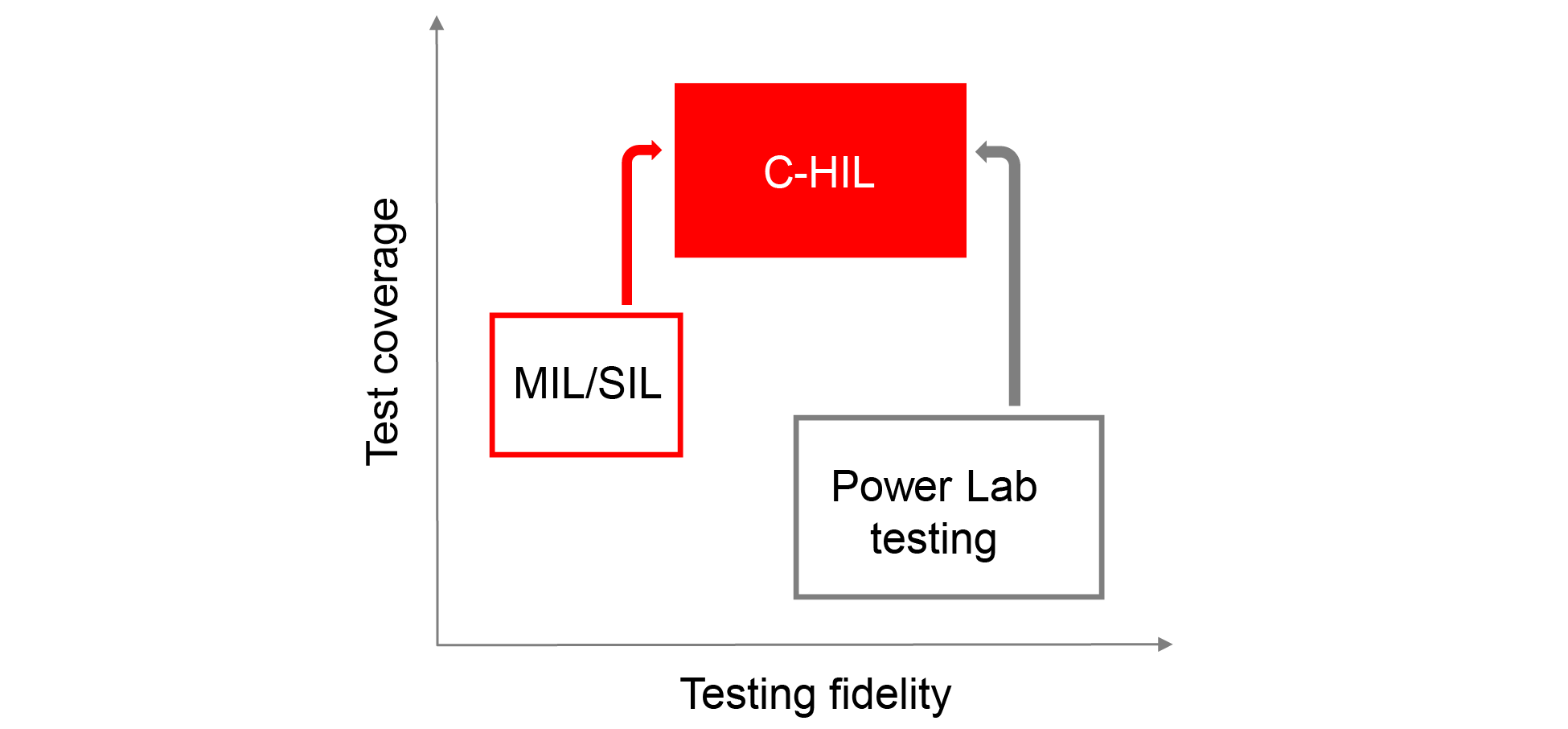
#3 Challenge | On-site and Power Lab Testing
After SIL simulation, the team would usually test on-site or in power labs. There are many test scenarios that would be very difficult or dangerous to test on-site or in a high-power lab environment. These include component failures, fault scenarios, and transient events such as the sudden loss of a generating unit (PV) or disconnection from the utility grid.
“We used to do testing on-site. But normally that implies a limited timeframe to run our tests and limited number of test cases that can be executed.
Michele Fusero
Senior R&D Engineer
Grid Edge Solutions at Hitachi Energy
These scenarios are difficult to test in real life because the tests are dependent on the weather – cloudy days without much sun or extreme weather resulting in blackouts or power outages. Microgrid application engineers would need to wait for days or weeks to get exact weather conditions.
Testing controller behavior during a grid disconnection event on-site to verify the transition from grid-connected to islanded mode can also be dangerous because it can disturb loads and users connected to the grid.
Solution | Typhoon HIL Controller Hardware-in-the-Loop Simulation
While SIL is a basic development tool, the Hitachi Energy Grid Edge Solutions team needed a high-fidelity testing environment to ensure all the controllable assets in the microgrid work in a coordinated way.
C-HIL is a combination of real controller hardware interfaced with a real-time high-fidelity model of the power system. The goal is to show the real performance of the actual controller in a realistic simulation environment that responds in real-time.
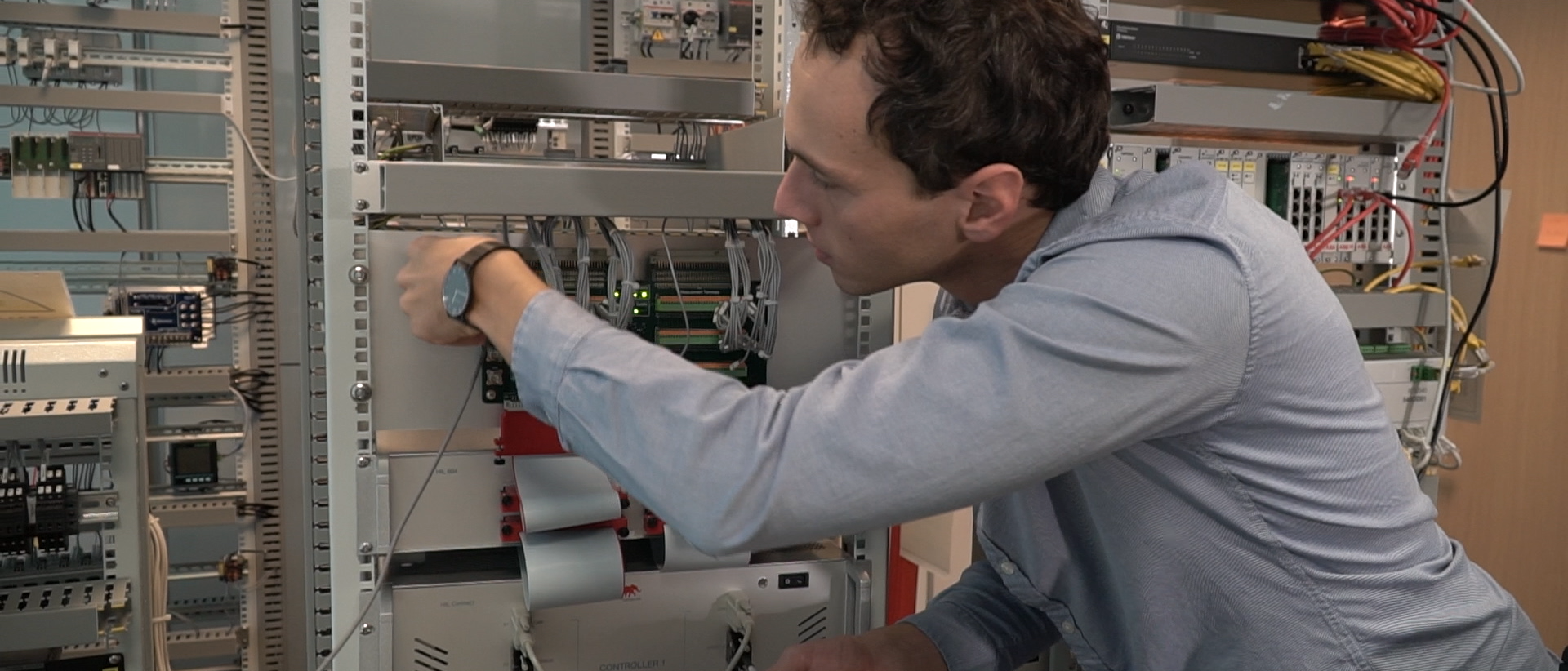
C-HIL is a digital twin or an exact copy of the power system and is easy to access in a lab. This makes it easy to catch unexpected control issues before deployment, reducing project risk.
“The C-HIL is an excellent tool because we can show the real performance of our controllers.
Tilo Buehler
Global Product Manager
Grid Edge Solutions at Hitachi Energy
For the Hitachi Energy Grid Edge Solutions team, C-HIL pushes the limits of testing, saves time, and enables continuous e-mesh Control development and maintenance.
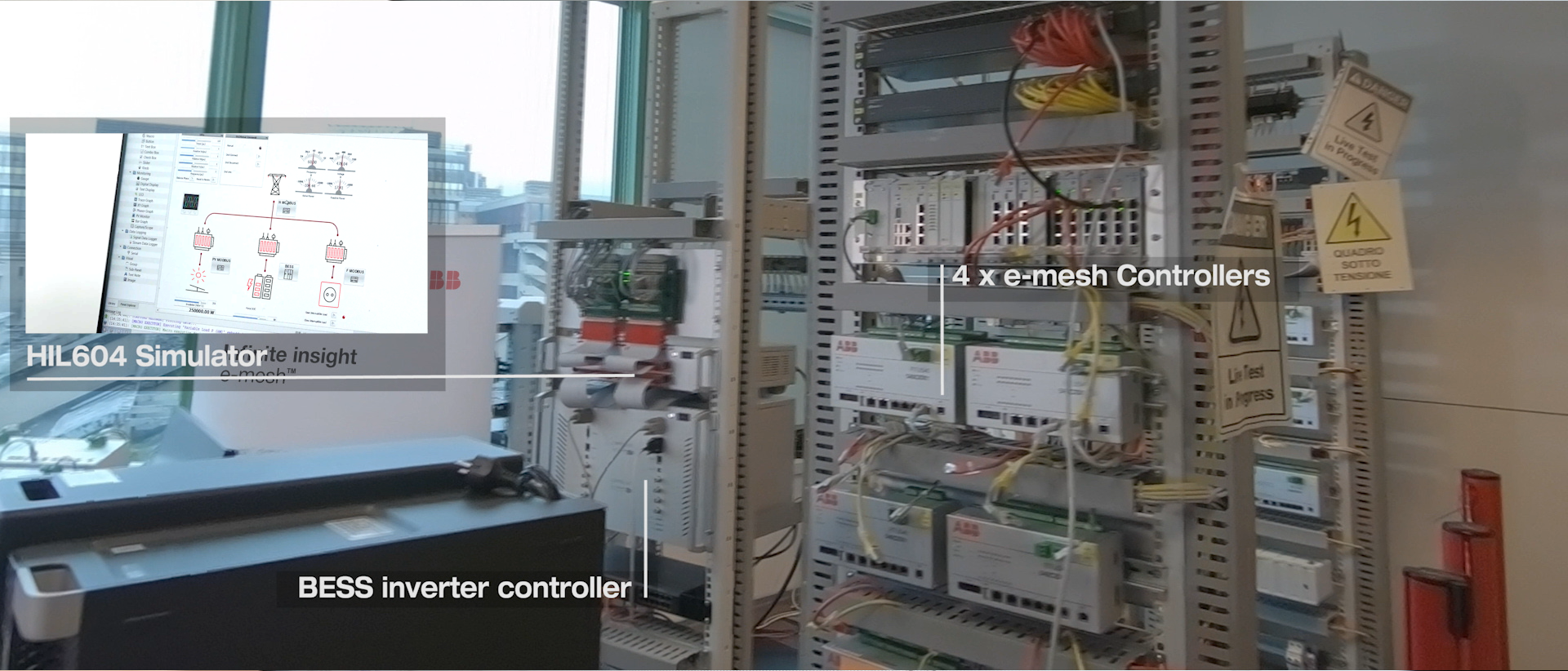
#1 Solution | C-HIL pushes the limits of testing
For Hitachi Energy, a C-HIL platform allows comprehensive test coverage of e-mesh Controls before deploying on-site.
C-HIL technology pushes the limits of testing because of the flexibility to simulate various test scenarios that would be difficult to test in real life. Instead of waiting for days or weeks for the weather to change or battery energy storage systems (BESS) to charge, the team can just press a button to simulate these conditions and get results in minutes.
“We can get good test coverage of the system behavior and thereby have good confidence that the control solution we developed will work in a real plant scenario.
Tilo Buehler
Global Product Manager
Grid Edge Solutions at Hitachi Energy
Example test scenarios with C-HIL:
- Loss of generated power from PV Plant
- Overcharging the BESS
- Disconnection from the utility grid
- The transition from grid-connected to islanded mode
- Failure at the PCC to the grid
#2 Solution | C-HIL Saves Development Time
C-HIL saves development time by reducing the amount of time for planning test activities, finding the availability of test labs, and setting up a test environment for various operational and fault scenarios.
Moreover, standard models already available in the Typhoon HIL microgrid library make setting up microgrid models fast and simple. This reduces the time needed for the development of the schematics while allowing the team to focus on testing the communications.
“The flexibility to adapt these microgrid models easily to have the required connection to our controllers allowed us to save four to five months in the development.
Michele Fusero
Senior R&D Engineer
Grid Edge Solutions at Hitachi Energy
It is easy to adapt the microgrid models to work with the real controller. There is no need to modify the controller to work with the simulator.
The standard microgrid models are optimized to run in real-time and are already set up to provide measurements and receive commands from the actual controllers. C-HIL is simply a plug-and-play approach.
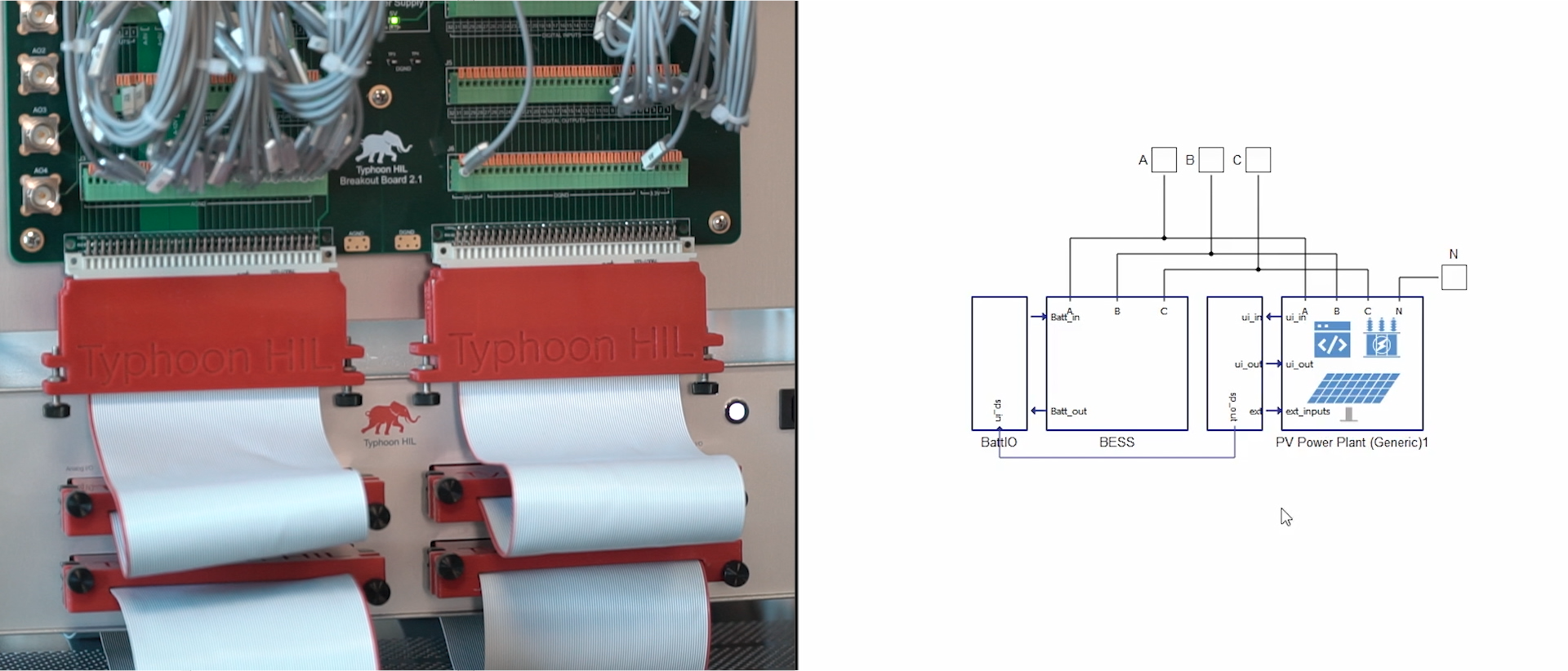
#3 Solution | C-HIL enables Continuous Development
For the Grid Edge Solutions team, C-HIL enables continuous development and maintenance throughout the entire product lifecycle.
C-HIL became an integral part of their toolchain from the early stages of control development through the later stages of customer engagement with factory acceptance testing. They can use it to quickly test out a new idea or troubleshoot problems in the field.
“We can use the Typhoon HIL simulator to provide models for customers especially during their factory acceptance tests.
Michele Fusero
Senior R&D Engineer
Grid Edge Solutions at Hitachi Energy
They can also use it for factory acceptance testing to demonstrate that the product performs according to customer expectations. C-HIL can be used to model the power system since not all of the system environments can be built in factory acceptance testing.
Results | Hitachi Energy pushed the limits of testing and saved 5 months of development time with C-HIL
The Grid Edge Solutions team at Hitachi Energy increased test coverage for their e-mesh Controls and saved up to 5 months in development time. Typhoon C-HIL technology-enabled quick set up of microgrid models and repeatable testing of all operational and fault scenarios.
CHIL also enabled continuous testing throughout all stages of the product's lifecycle, from early development to later stages through customer engagement with factory acceptance testing. This provides their customers with a reliable, stable, and cost-effective energy solution.
For the Hitachi Energy Grid Edge Solutions team, HIL Tested means: flexibility, reliability, optimization, and great performance.
Are you looking to adopt HIL in your work?
Are you interested to learn more?


